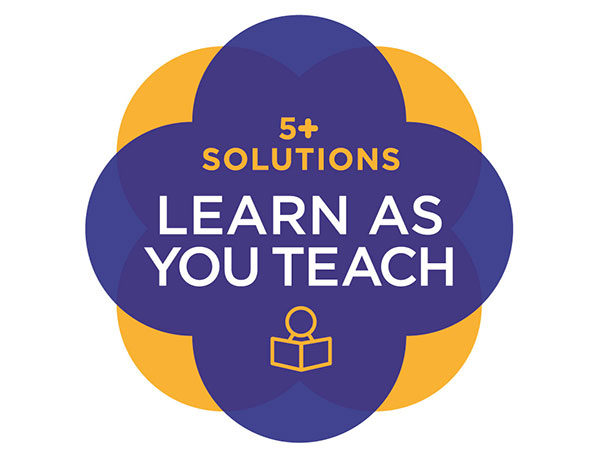Involve me and I learn
“Tell me and I forget, teach me and I remember, involve me and I learn” – Benjamin Franklin
Perhaps we can take a moment in this article to explore, what as educators we may understand by this most famous of quotes, and how that might be effectively applied to any learning environment, including online tuition.
The online learning environment – do children feel more or less involved?
I have been asked as an online tutor, whether or not, it is possible to make the same connection with children as I would if I were tutoring them face to face. The answer is not only yes but I actually think it is easier to do so! The technology does allow us to be right there with the children, coaching them, interacting with them both personally and with their work.
Most pupils are pleased to receive that online tuition call that is for them and do actually relish the way their work is talked through, with them, on screen. There is something beguiling about having your work copied and seeing yourself in print! To make the tuition work well, both parents and tutor have to be quite well prepared. Children enjoy how parents take time to scan in their work and send it to their tutor. I am often told by children, that they were there when the work was scanned in, and find myself being instructed as to what documents I should be in possession of!
I have further noticed that there is even a greater sense of anticipation for the tutoring session; of needing to have all in place ready for the Skype call, than when I was available to visit them personally! One parent recently commented on how their son reminds them of when they have their online tutor and chases him as to whether or not he has scanned in their work. He added that his son now takes time to assemble what he needs for the session – which has never happened before!
I also notice a desire to shoo parents away on the part of the children, so that they can have this personal onscreen time with their tutor. I have pondered this and have come to the conclusion that they find the Skype call a lot less threatening than the physical presence of the tutor – however well-meaning, patient or kind that person may be. This online environment is an environment where they feel more in control and more involved with getting their work to their tutor. It is an environment where they feel “fussed over” by both parents and tutor.
The online environment is also more familiar to them, being much more children of this technological age than the adults surrounding them. In short, online, they feel safe, and what is more significant – important.
The online learning environment – is it more or less sensitive to different learning styles?
An important strategy in any well-trained teacher or tutor is an ability to recognise and exploit different learning styles. We all have preferred ways in which we like to learn – hearing information, reading the information, visual-based presentations or experiencing it physically – the kinaesthetic learner. As I teach a lot online, I am aware of the need to present subjects in a variety of ways.
This is especially true of the teaching of modern languages – making use, for example, of colourful images, interactive games, power points, saying and reading information or language together, singing songs or raps, and employing actions. However, even a naturally more inclined kinaesthetic learner may feel inhibited at jumping to their feet and doing actions in a class, or even alone with a tutor who is present physically.
The screen creates something of a safe distance and provides an environment, where children are much more willing to chat in French or Spanish, get involved with doing actions, sing, or play an interactive game.
The online learning environment – discovering the learning for yourself.
It would, perhaps, be disingenuous to conclude this article without addressing something of what Benjamin Franklin might have meant by “involve me and I learn” in respect of teaching and learning methodology and practice. He was, without doubt, drawing us away from older traditions of learning by rote, or more didactic practice whereby teachers just present information, and take it as read that this has been suitably digested by their learners.
It has often been said that experience is a great teacher – this is no less true of the learning environment. As with any learning environment, the online tutor must allow for some element of investigation; modelling and collaborative participation – the piecing together of things learned, on the part of the learner, and the discovery that in doing so they have journeyed to another place.

